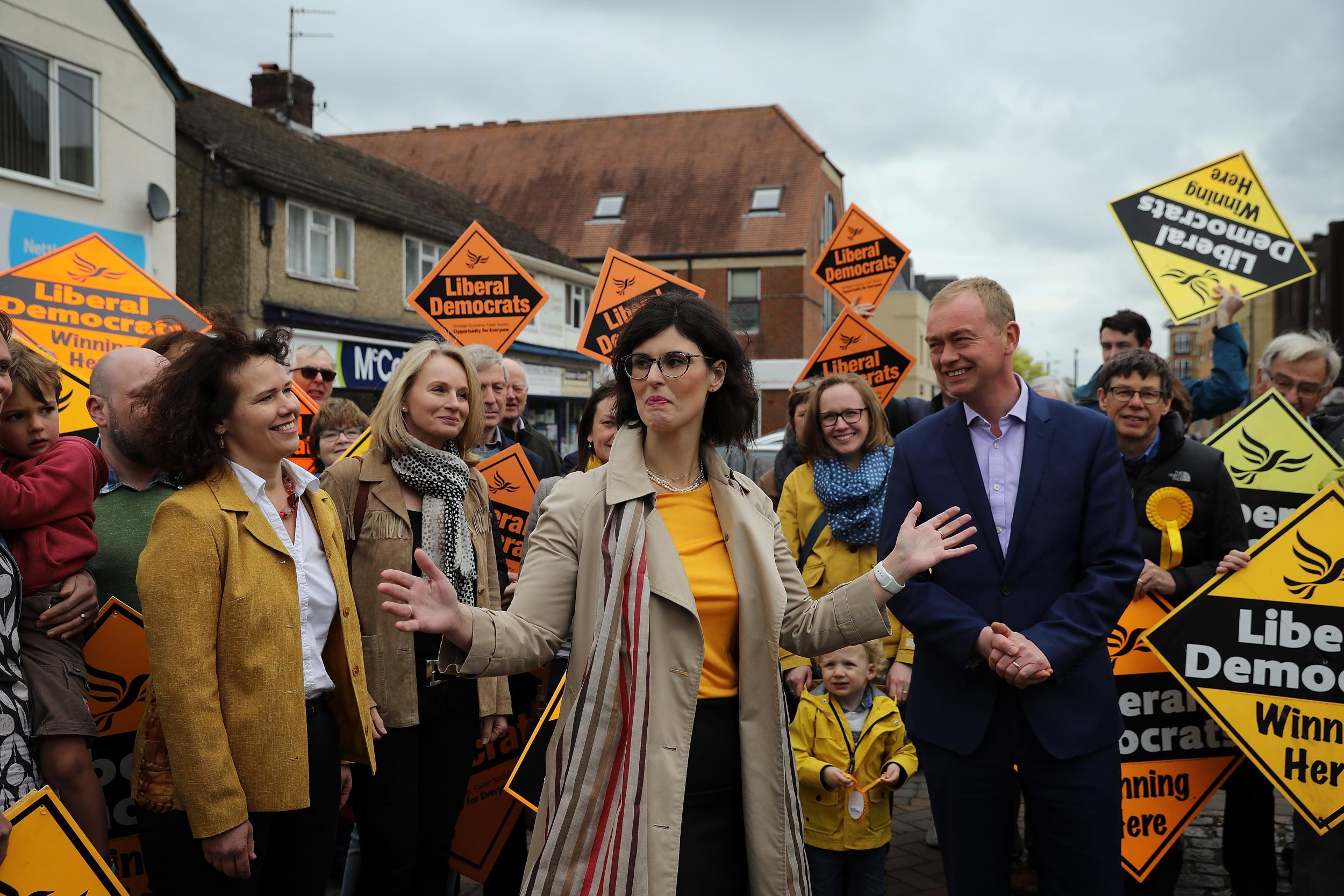The Liberal Democrat election strategy to target the 48 per cent isn’t working
While a Brexit election offers Tim Farron’s party an opportunity, it also carries risks. Ukip is standing down in more than 200 seats, giving the Tories another boost next month


When Theresa May called the unexpected election, one party other than the Conservatives had reasons to be cheerful. The Liberal Democrats were already on an upward curve, after winning the Richmond Park by-election, which vindicated their strategy of targeting the 48 per cent who voted to Remain in the EU.
Labour didn’t know which way to turn on Brexit and ended up facing both ways. In contrast, the Lib Dems had the virtue of a clear message: a referendum on the exit deal. Membership of the party has since risen to 102,000: its highest ever. Hopes were high because the election would give the Lib Dems the precious oxygen of publicity they lacked with just nine MPs.
Yet the unwritten story of this election is that, so far, that strategy has not gone as well as they were hoping. The local council elections produced overall losses rather than gains for the Lib Dems. True, an 18 per cent projected share of the vote put them only nine points behind Labour, but the opinion polls are gloomy: despite Labour’s woes, the Lib Dems average only 10 per cent.
“They should be on 30 per cent,” said one Labour centrist, who wishes the Lib Dems well. A Lib Dem candidate admitted: “It’s just not happening yet.”
While a Brexit election offers Tim Farron’s party an opportunity, it also carries risks. Ukip voters switching to the Tories hurt the Lib Dems in the council elections. Ukip will not contest 200 seats on 8 June, giving the Tories another boost.
The scope for sweeping Lib Dem gains seems limited. They are in second place in only 10 seats where the Tories have a majority of under 10 per cent, while another 15 have majorities of less than 20 per cent. Only a few of these constituencies were strongly Remain in the referendum. The South West, where the Lib Dems were wiped out by the Tories in 2015, mainly voted Leave. The Lib Dems will pick up new votes from Labour Remainers unhappy with Jeremy Corbyn’s feeble opposition to Brexit, but these will be hard to translate into seats.
Inevitably, in a presidential contest framed by the Tories as a choice between May and Corbyn, some Lib Dems wonder whether Farron is cutting it as leader. The committed Christian was slow to close down a silly media frenzy over whether he thought gay sex was a sin. “He hasn’t got the clout of Nick Clegg or Vince Cable,” said one Lib Dem.
It is true that Farron has not cut through yet. But he, and his party’s message, remain unknown to many voters. He will have a much higher profile in the coming week, with the launch of the party’s manifesto and, crucially, the first television debates.
Lib Dems aching for something close to Cleggmania should remember that it did not break out until the first TV debate in 2010. (Memo to Farron: you’ll know you’re doing well if and when the Tory newspapers start digging into your donations and personal stuff.) There is still time for Farron to make his mark, but he needs to do it quickly.
Lib Dem officials insist the council results show the party would win 20 seats next month. Yet that does not quite square with Farron’s over-ambitious goal of overtaking Labour to become the official opposition. True, politics is fluid. Farron sees himself as a British version of Emmanuel Macron, who leapfrogged the two established parties to become French President. But it is hard to make such a breakthrough in our first-past-the-post system, which props up Labour and the Tories even when they are weak and limping, as Labour is now.
The Lib Dems still have a spring in their step and live in hope. They have put on a spurt in the last lap in previous elections, especially when there was not a close race between the two main runners. Yet on current trends, it feels like the Lib Dems will take a small step rather than a giant leap.
Even if they trail a poor third, the Lib Dems do matter in this election. Corbyn would never admit it, but he needs Farron’s party to do well against the Tories, to give Labour any hope of running May close.
Farron’s message will be that people who don’t really like May, but like Corbyn even less, can afford to vote for their own liberal values. She is going to win anyway, and doesn’t need a landslide. It is a message that voters should take seriously.


Join our commenting forum
Join thought-provoking conversations, follow other Independent readers and see their replies